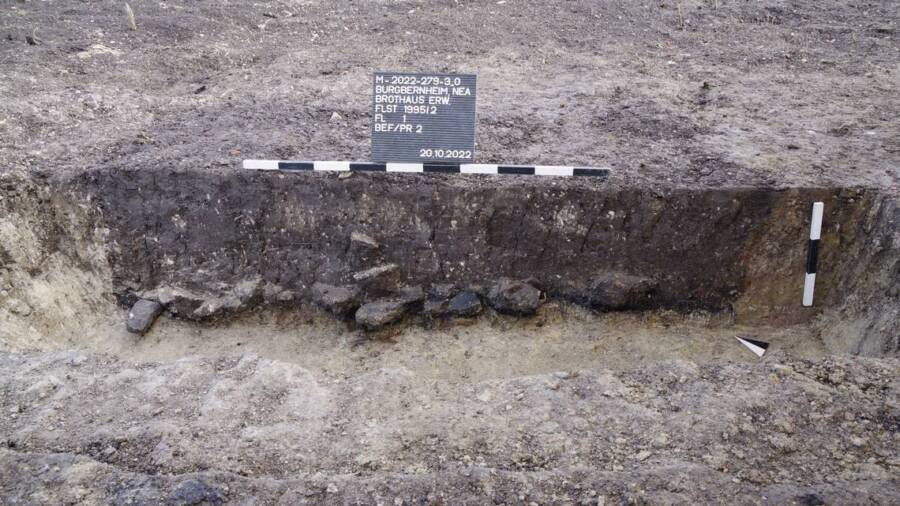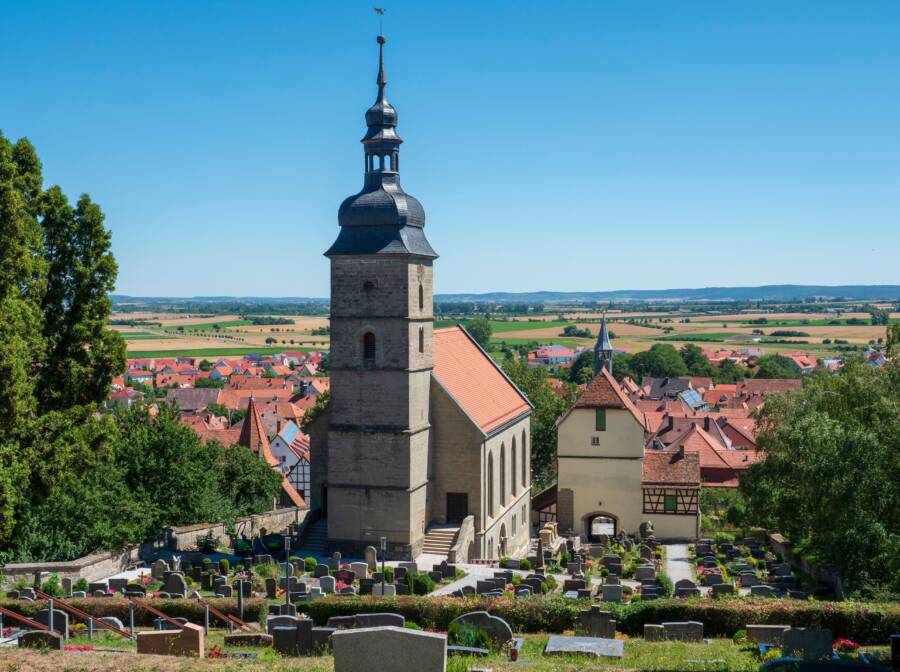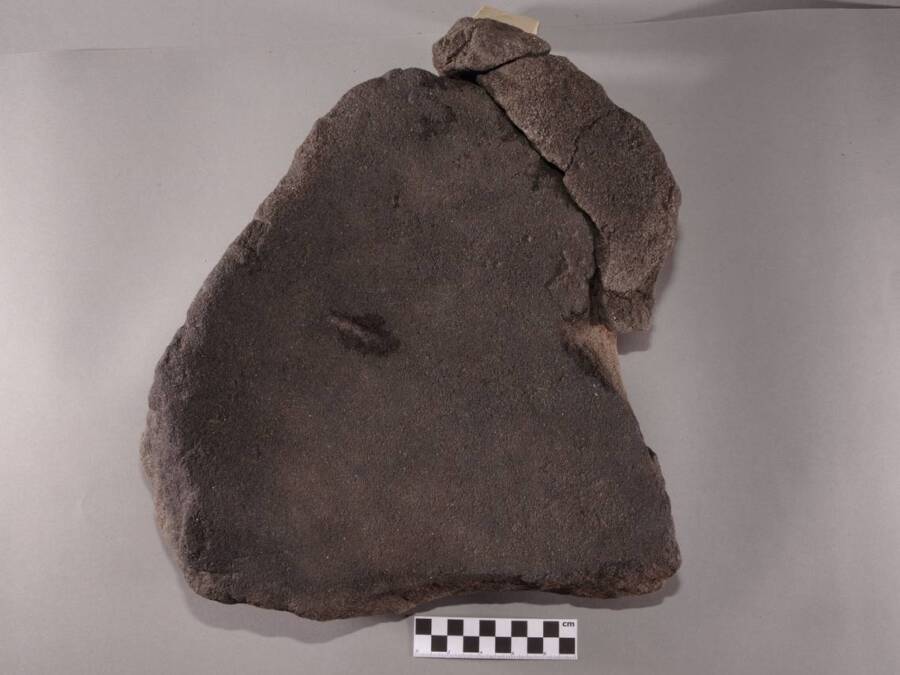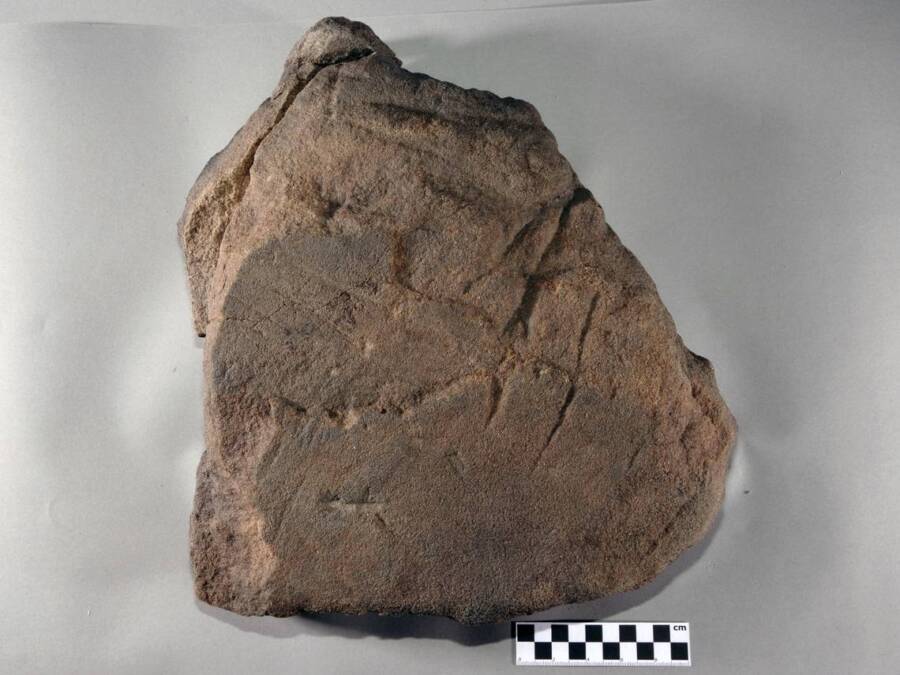Remnants of the ancient bakery include several cooking pits filled with charcoal and grain residue and a grinding stone used to mill flour.

Bavarian State Office for Monument PreservationThis 2,800-year-old cooking pit discovered in Burgbernheim, Germany, was once used to bake grains like millet and oats.
While excavating a site ahead of the expansion of a local bakery chain in Burgbernheim, Germany, archaeologists made a fitting discovery: evidence of ancient baking equipment. A grinding stone and grain residue found within several cooking pits suggest Iron Age Germans used the plot of land as a bakery of their own around 800 B.C.E.
Now, these artifacts are offering a glimpse into the diets and agricultural practices of the people who lived in the area 2,800 years ago.
Ancient Baking Equipment Is Discovered While Constructing A New Bakery

Ernst Wrba/Alamy Stock PhotoThe town of Burgbernheim in Bavaria, Germany, where the ancient bakery was discovered.
Officials from the Bavarian State Office for Monument Preservation recently announced the discovery of a 2,800-year-old bakery after a years-long project in Burgbernheim, Germany. Archaeologists came across the find while conducting excavations ahead of the construction of a new local bakery chain location.
A high concentration of cooking pits at the site was the first sign that the archaeologists had uncovered something unique. “Cooking pits have been identified in previous studies both in this region and beyond,” explained Dr. Stefanie Berg, the head of the Department of Archaeological Monument Preservation at the Bavarian State Office for Monument Preservation (BLfD), according to Archaeology News.
“However,” Berg continued, “the exceptional concentration of these structures documented here is highly significant for reconstructing diets and agricultural practices during the Metal Ages in Bavaria.”
Radiocarbon dating on charcoal in the pits revealed that they dated back to 800 B.C.E., the midst of the Iron Age. Archaeobotanical analysis on the charcoal samples also revealed the primary ingredients used in the cooking pits: wheat, einkorn, spelt, and oats. There was also rare evidence of physalis seeds from a fruit similar to a tomato.
Now, researchers are analyzing these discoveries to learn more about the diets and agricultural practices of Iron Age Germans.
What Can These Cooking Pits Reveal About Ancient History?

Bavarian State Office for Monument PreservationThe top of the ancient millstone used to grind wheat.
Alongside charcoal and cooking pits, archaeologists recovered a grinding stone used to mill grain into flour. Measuring approximately 10 inches by 13 inches, the stone had a smooth, worn surface that was slightly bowl-shaped and a flat bottom, suggesting it was heavily used.
In all, these discoveries suggest that ancient populations in the area made flour and cooked it in the pits to bake bread. The history of bread goes back as far as 30,000 years, and it was likely first made in Europe during the Neolithic period around 10,000 years ago.

Bavarian State Office for Monument PreservationThe flat bottom of the grinding stone.
This most recent discovery has given researchers an opportunity to study bread making in Bavaria, expanding experts’ knowledge of the region’s rich agricultural history. “This discovery is extremely important for understanding ancient Burgbernheim and its role in agricultural development,” Dr. Berg stated.
Now, findings from the site will be transported to BLfD’s restoration workshop for further analysis and conservation.
After reading about the Iron Age bakery uncovered in Germany, go inside the ancient origins of pizza. Then, read about the 8,600-year-old bread found in Türkiye.





